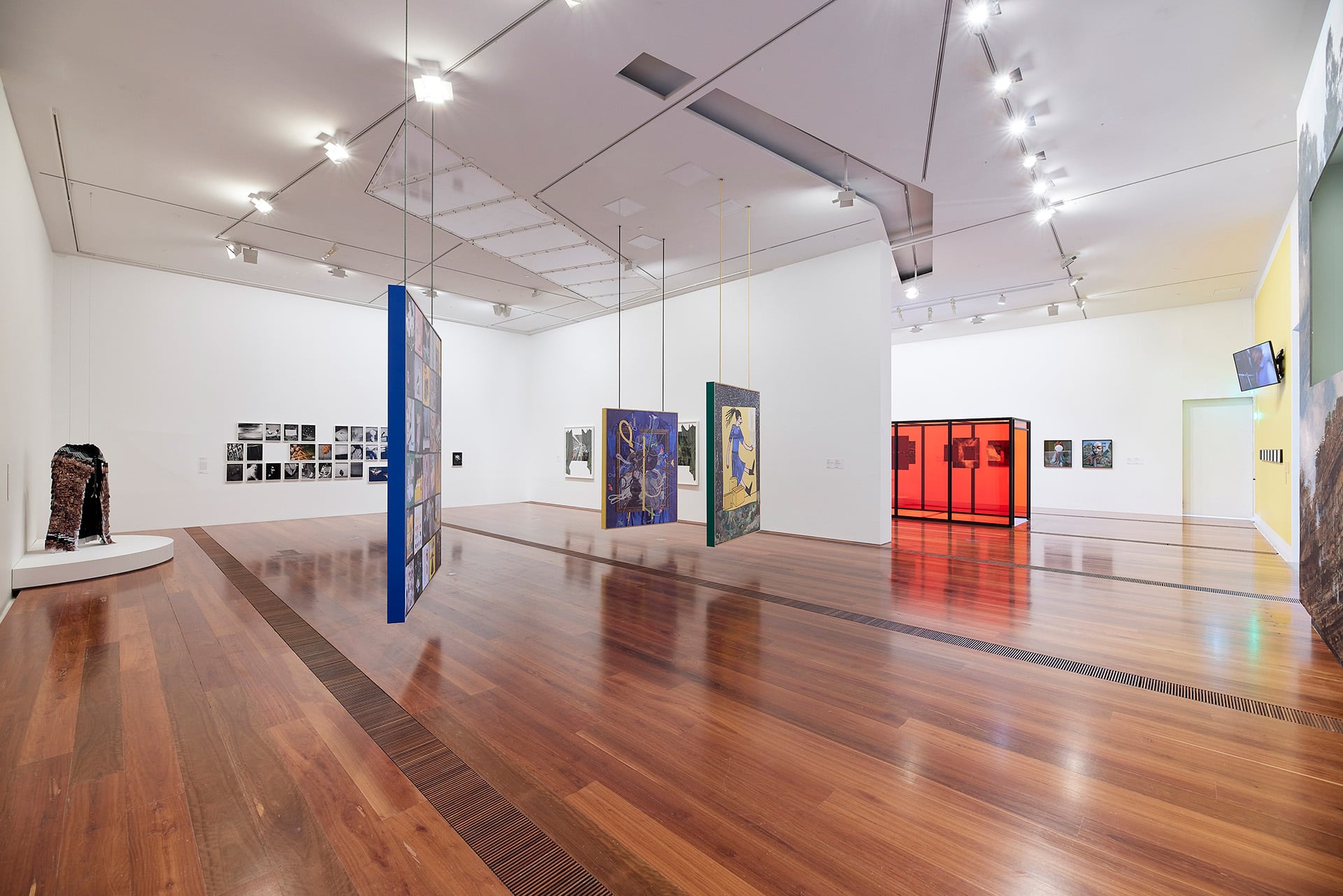Slippery Images
Free entry
The Ian Potter Centre: NGV Australia, Fed Square
Level 3
A slide. A slip. For a fleeting moment, in that split-second of instability, you are forced to make sense of the difference between your perception of the scene and its reality. Unexpected, shocking, even hilarious, the slip creates a brief, sometimes brutal, disjuncture from expectation. Time appears to run both quickly and slowly. You are temporarily untethered. To regain balance, you must feel for the space or surface, which has momentarily become strange.
The artists in Slippery Images play with this slippage between familiarity and unfamiliarity.1 The project brings together the work of twelve Melbourne artists who explore and challenge the use of photography as a straightforward representation of the world around us; that is, the expectation that a photograph is an index of the world, of what was there and what was seen. Rather than take images, these artists make them – their works celebrate the loose, fluid, unfixed and slippery aspects of the photographic medium. Even among the artists whose photographs document the ‘real world’, their images remain elusive and, at times, evasive – they slide away from a straight reading of fact.2
The artists in Slippery Images work with photography in varied ways. Some play with the surface of images: cutting and collaging, painting over and piercing through, intricate weaving, re-photographing. Others play with display, suspending works and hanging them ‘off the wall’, to create sculptural images that could be worn, or that the viewer can walk around. There are varying degrees of abstraction: images made through the digital collaging of analogue photographs, constructed in the darkroom, or made without a camera at all. And there is a complex sense of duration: even when originating as quick photographic ‘snaps’, the images show traces of labour, with some taking months to make and others originating years earlier. Together, these techniques and processes shift the expectations of images as things to be read and ‘understood’.
Many of the works are inherently local but, whether created on neighbourhood walks during the Melbourne COVID-19 lockdowns, photographed at culturally significant sites both ancient and new – such as at the confluence of the Birrarung and Merri Creek – made in inner-city studios, or sourced from the photographic archives of the NGV itself, their sense of place is not always easy to determine. They raise questions like ‘What lies beneath the surface?’ and ‘What is it that cannot be seen?’ And the artists are connected to a more expansive conversation about the place of photography within contemporary art through their expanded uses of image-making and through their local and international networks, with many of the artists working as teachers, educators and darkroom and imaging technicians.3
The artists in Slippery Images continue a long-held tradition of enquiry into photography and images. They present works that record the ‘real’ and show a deep appreciation for photographic materials. Simultaneously, they abstract that realness, with images that obscure, complicate, mess up and distort. Perhaps reflective of the times, the images have an inherently fragmentary nature; they constantly slip in and out of reach.
Maggie Finch, Curator, Photography, NGV
1 An exhibiting artist, Danica Chappell, presented a suite of daguerreotypes in an exhibition at Caves, Melbourne, in 2015 that were entitled Slippery Images #1–3; see cavesgallery.com, accessed 12 Sep. 2022.
2 This idea is reminiscent of a statement by art historian Susan Sontag: ‘It is not reality that photographs make immediately accessible, but images’. See Susan Sontag, ‘The Image-World’, in On Photography, Penguin Books, New York, 1977, p. 165.
3 Another exhibiting artist, Kiron Robinson, for example, has interrogated the current role and state of photography within contemporary art, and in a post-indexical state, in his studio-based practice as an artist, in his teaching at the Victorian College of the Arts, and through his numerous writings and curatorial projects which connect to similar ideas as those explored in Slippery Images, particularly the exhibitions Not for the Sake of Something More, (at Sarah Scout Presents, Melbourne, 2021), and Is/Is Not, (at West Space, Melbourne, 2016).
